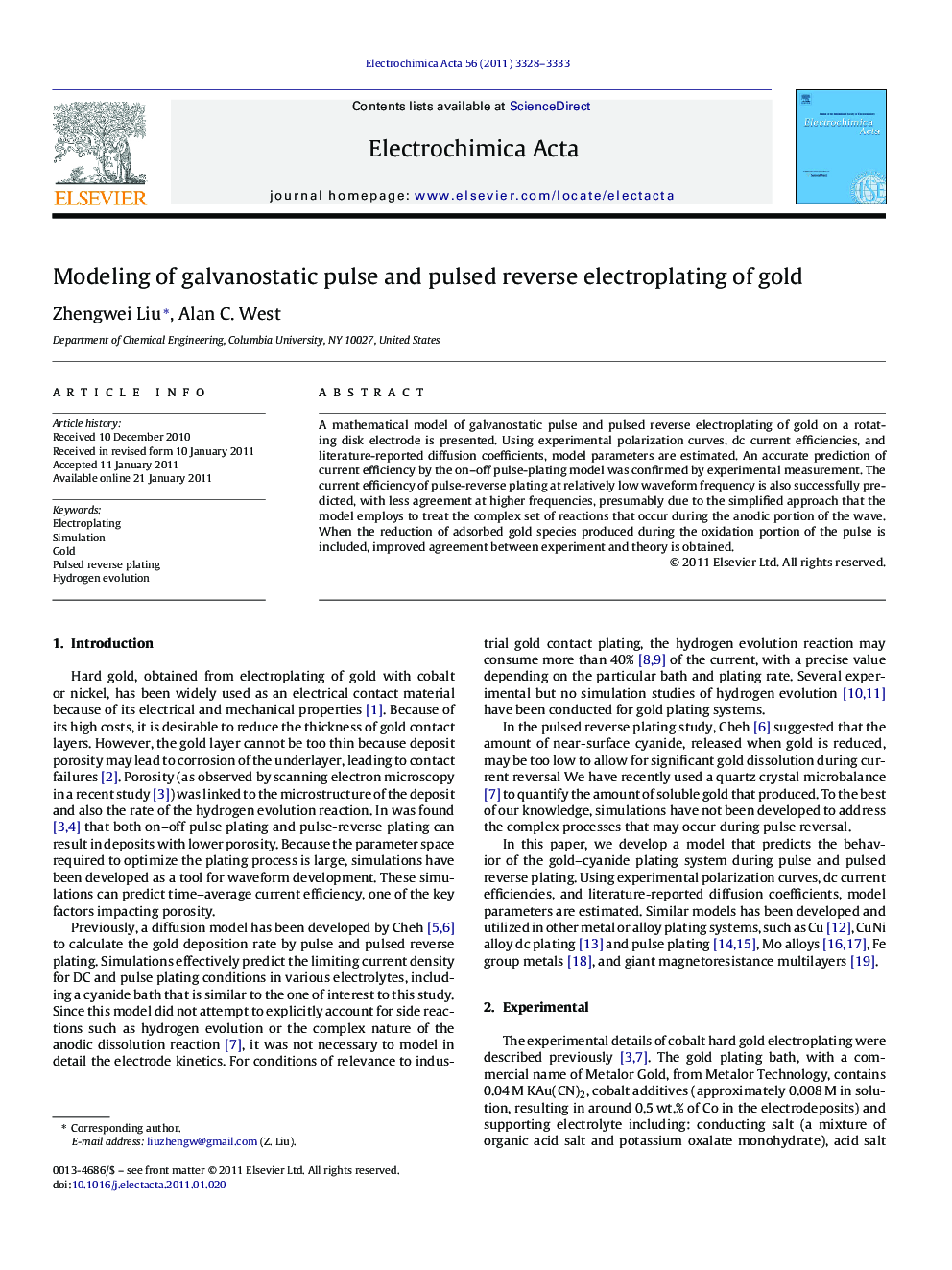| کد مقاله | کد نشریه | سال انتشار | مقاله انگلیسی | نسخه تمام متن |
|---|---|---|---|---|
| 189836 | 459686 | 2011 | 6 صفحه PDF | دانلود رایگان |

A mathematical model of galvanostatic pulse and pulsed reverse electroplating of gold on a rotating disk electrode is presented. Using experimental polarization curves, dc current efficiencies, and literature-reported diffusion coefficients, model parameters are estimated. An accurate prediction of current efficiency by the on–off pulse-plating model was confirmed by experimental measurement. The current efficiency of pulse-reverse plating at relatively low waveform frequency is also successfully predicted, with less agreement at higher frequencies, presumably due to the simplified approach that the model employs to treat the complex set of reactions that occur during the anodic portion of the wave. When the reduction of adsorbed gold species produced during the oxidation portion of the pulse is included, improved agreement between experiment and theory is obtained.
Journal: Electrochimica Acta - Volume 56, Issue 9, 30 March 2011, Pages 3328–3333